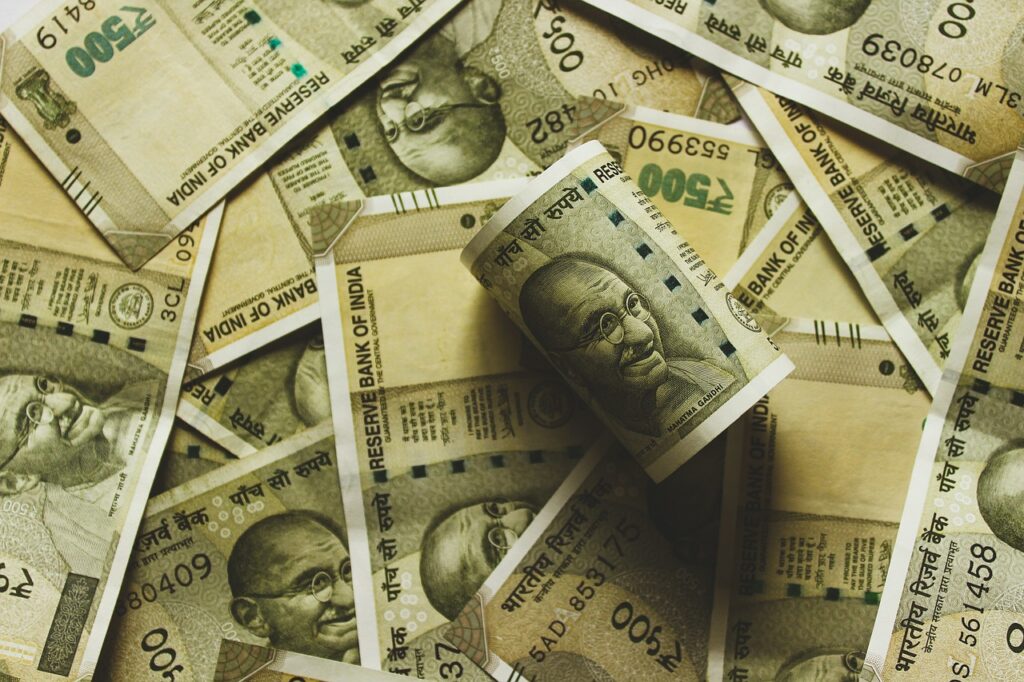The Reserve Bank of India has taken steps to stabilize the Rupee and reduce dependence on the US Dollar by allowing international trade invoicing to be done in Rupees. This move allows for greater trade in Rupees and the surplus Rupees can now be invested back into Rupee assets. For a currency to be widely accepted, free movement of capital and trade is necessary. This change allows for greater liberalization in the Rupee market.
What exactly is the concept of settling international trade in rupees?
When importing and exporting goods and services across countries, payments usually have to be made in a foreign currency, with the US dollar acting as the dominant reserve currency for such transactions. However, dealing in foreign currencies can lead to issues like added conversion expenses and exposure to fluctuations in exchange rates. Thus, settling trade in rupees enables Indian parties to transact in their own currency if their counterpart also holds a Rupee Vostro account.
This decision was made to facilitate trade with countries like Sri Lanka, which has a low foreign exchange reserve, and Russia, which faces US-imposed sanctions barring it from using the dollar. Rupee Vostro accounts refer to accounts set up by foreign banks with Indian banks in rupees, allowing overseas parties to transfer money in and out of India. Correspondingly, Nostro accounts denote Indian banks’ accounts held with foreign banks in foreign currency in other countries.
What does international trade settlement in rupees entail?
International trade involves transactions where goods and services are imported and exported, necessitating payments in foreign currencies. As the US dollar is widely accepted, most such transactions take place in it. For instance, an Indian buyer importing from a German seller must convert rupees to US dollars, which the seller then converts to euros.
The conversion expenses and forex rate fluctuations become the liability of both parties. In trade settlement in rupees, if a counterparty has a Rupee Vostro account, invoices will be in Indian currency, easing transactions with countries like Russia, which faces US dollar sanctions, and Sri Lanka, short of forex reserves. A Rupee Vostro account is a foreign bank account held with an Indian entity, while a Nostro account is the reverse.
What is the reason behind the Reserve Bank of India’s (RBI) desire to settle payments in Rupees?
The RBI hopes that this decision will assist in decreasing India’s reliance on US currency. Whilst this change may not have an immediate effect, experts suggest that it will profit the country in the long run. Anindya Banerjee, VP of currency and interest rate derivatives at Kotak Securities believes that “We see little impact on USDINR value over the short to medium term. Over the long term, it will shift some demand into Rupees from USD. But the impact of that USDINR will be very gradual.”
One motivator could be the sanctions placed on Russia due to its actions in Ukraine and the subsequent exclusion of Russia from the SWIFT payments system. In addition, as India has a trade deficit, settling trades in rupees could save dollar outflows. With the rupee’s value decreasing each week against the US dollar, this becomes significant. Avoiding the SWIFT payments system and paying for imports in rupees could also help India circumvent the sanctions imposed on its trading partners.
What is the reasoning behind RBI’s decision to conduct payment settlements in Rupees?
RBI aims to reduce India’s reliance on the US currency, which may not have an immediate impact but will eventually benefit the country. According to Anindya Banerjee, VP of currency and interest rate derivatives at Kotak Securities, there will be little, short to medium-term impact on the USDINR value, but the long-term effect will gradually shift some demand into Rupees.
This decision may have been influenced by the sanctions imposed on Russia and its exclusion from the SWIFT payments system. Since India has a trade deficit, settling trades in rupees could prevent dollar outflows, which is particularly significant as the rupee’s value continues to decrease against the US dollar. Not using the SWIFT payments system and relying on rupee payments for imports could also aid India in bypassing trade sanctions imposed on its partners.
Do you have a question about this article or are you interested in doing business in India, please get in touch with us here.

